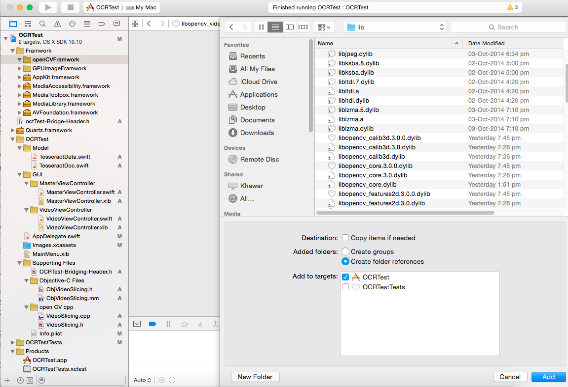

- Setting up opencv for mac how to#
- Setting up opencv for mac install#
- Setting up opencv for mac update#
- Setting up opencv for mac archive#
- Setting up opencv for mac code#
Ld: symbol(s) not found for architecture x86_64Ĭlang: error: linker command failed with exit code 1 (use -v to see invocation)Ġ2:44:38: The process "/usr/bin/make" exited with code 2.Įrror while building/deploying project RP_openCV_01 (kit: Desktop Qt 5.0.
Setting up opencv for mac install#
"cv::imshow(std::string const&, cv::_InputArray const&)", referenced from: Install Python on your system Install pip Install OpenCV library using pip. "cv::imread(std::string const&, int)", referenced from:

"cv::Mat::deallocate()", referenced from: Once the download is complete, unzip the. I have outlined the procedure below to get OpenCV up and running on your Mac. The advantage of OpenCV is that the algorithms are highly optimized and the library is available on almost all the popular platforms.
Setting up opencv for mac archive#
"cv::namedWindow(std::string const&, int)", referenced from: Note: If you dont feel like wasting time building stuff or dislike the terminal, you can most likely install OpenCV from the Synaptic package manager GUI. As you can see in the image above, Click on Sources button to download OpenCV 4.1.0 archive files into your system. Hence Intel decided to do something about it and came up with OpenCV. "cv::_InputArray::_InputArray(cv::Mat const&)", referenced from: Undefined symbols for architecture x86_64: Tried it without periods, += output with error Running steps for project RP_openCV_01.Ġ2:44:38: Configuration unchanged, skipping qmake step.Ĭlang++ -headerpad_max_install_names -mmacosx-version-min=10.6 -o RP_openCV_01 main.o -L/usr/local/lib -1ibopencv_core.2.4.6,dylib -1ibopencv_imgproc.2.4.6.dylib -F/Users/rise/Qt5.0.2/5.0.2/clang_64/lib -framework QtCoreĬlang: warning: argument unused during compilation: '-1ibopencv_core.2.4.6,dylib'Ĭlang: warning: argument unused during compilation: '-1ibopencv_imgproc.2.4.6.dylib' Installing ROpenCVLite should go smoothly on all major operating systems (Mac, Windows, and Ubuntu-like Linux). If more detail or specifics are needed, please let me know or check out my post at "stackOverflow": OpenCV is correctly installed for OSX - the headers are at /usr/local/include and the libs at /usr/local/libs. I've tried various ways of specifying the lib path & libs in the project profile. I've written an extensive post about "what I have tried so far over at stackOverflow": Rather than repost all that here, the gist is that I don't seem to be linking to the OpenCV libs correctly.

Most of the information I've found on this pertains to Windows or Linux so I'm struggling.
Setting up opencv for mac how to#
Put OpenCV in OS X with Homebrew and input / output video with python How to install OpenCV with Homebrew OtherĪs an aside, next I would like to try building an Ubuntu OpenCV environment.I'm new to QT and am having trouble setting up OpenCV for use with QT under OSX.
Run cmakeSetting up opencv for mac update#
pip update pip install numpy brew linkapps Add export PYTHONPATH/usr/local/Cellar/opencv/. Building OpenCV from Source Using CMake Create a temporary directory, which we denote as buildopencv, where you want to put the generated Makefiles, project. Installation and Usage Option 1 - Main modules package: pip install opencv-python Option 2 - Full package (contains both main modules and contrib/extra. Gray = cv2.cvtColor(img, cv2.COLOR_BGR2GRAY)Įdge = cv2.Canny(gray, thrs1, thrs2, apertureSize=5) Install python using brew - brew install python.

A memo when building an environment of OpenCV using homebrew.įrom initial setting to sample execution.


 0 kommentar(er)
0 kommentar(er)
